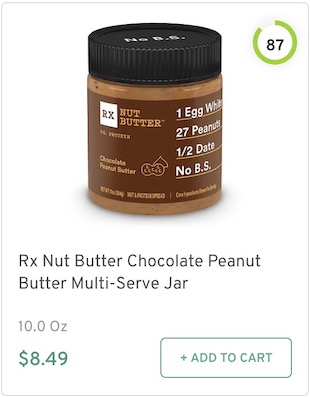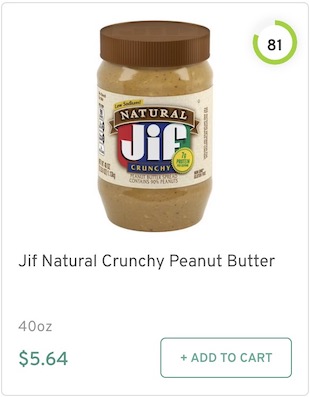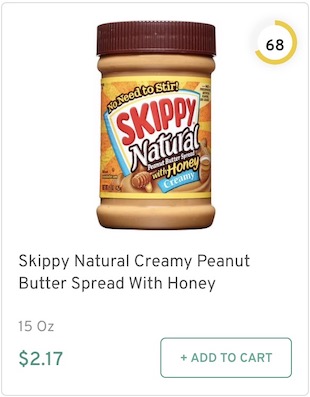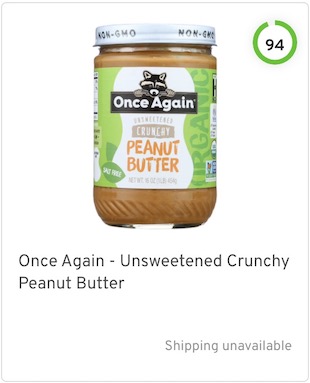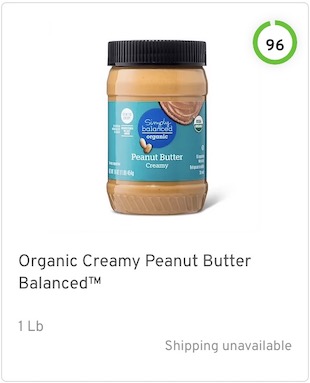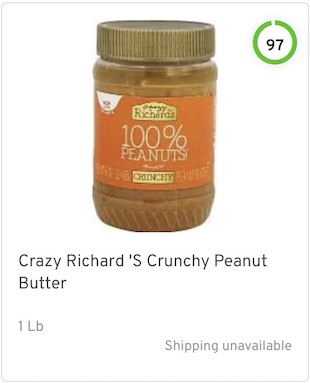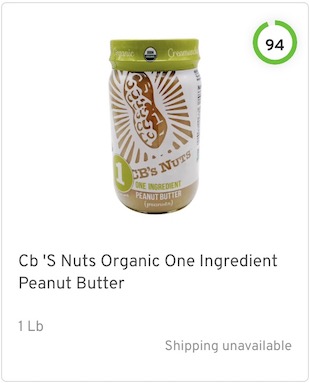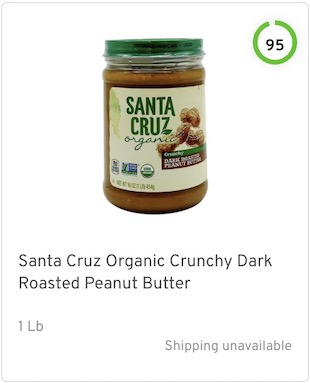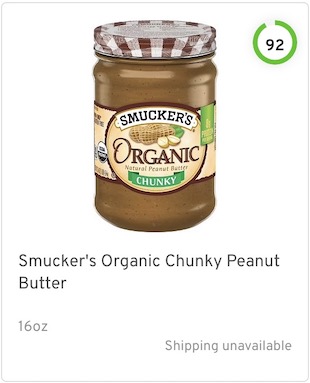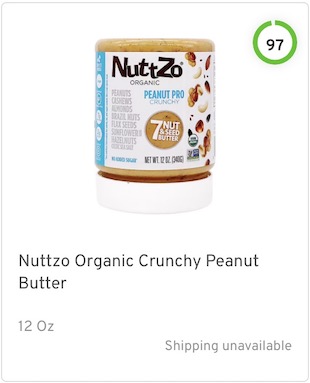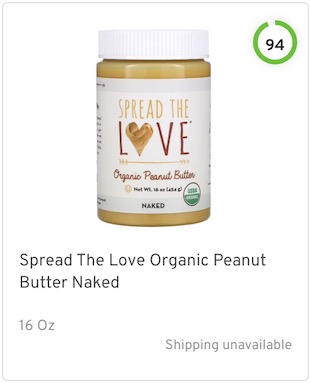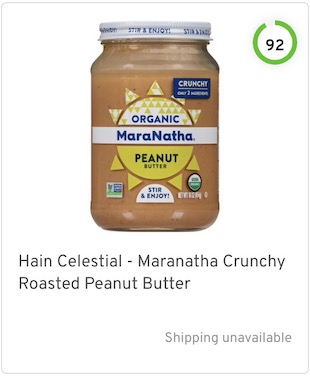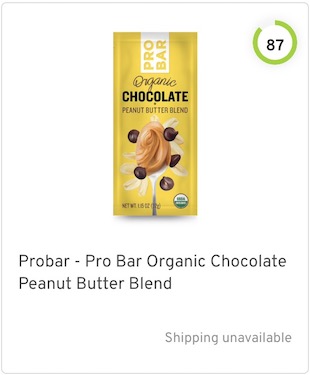Try our new free GreenChoice - Food Scanner mobile app!
DOWNLOAD-
-
-
Diets
Allergies
Take our 30-second quiz & we’ll filter our site to show only products that match your dietary preferences.
- GCNow
- Is Peanut Butter Gluten-Free?
Is Peanut Butter Gluten-Free?
Authors: Katherine Stallard, Merve Basoglu and Sydney WexlerPublished: October 5, 2021
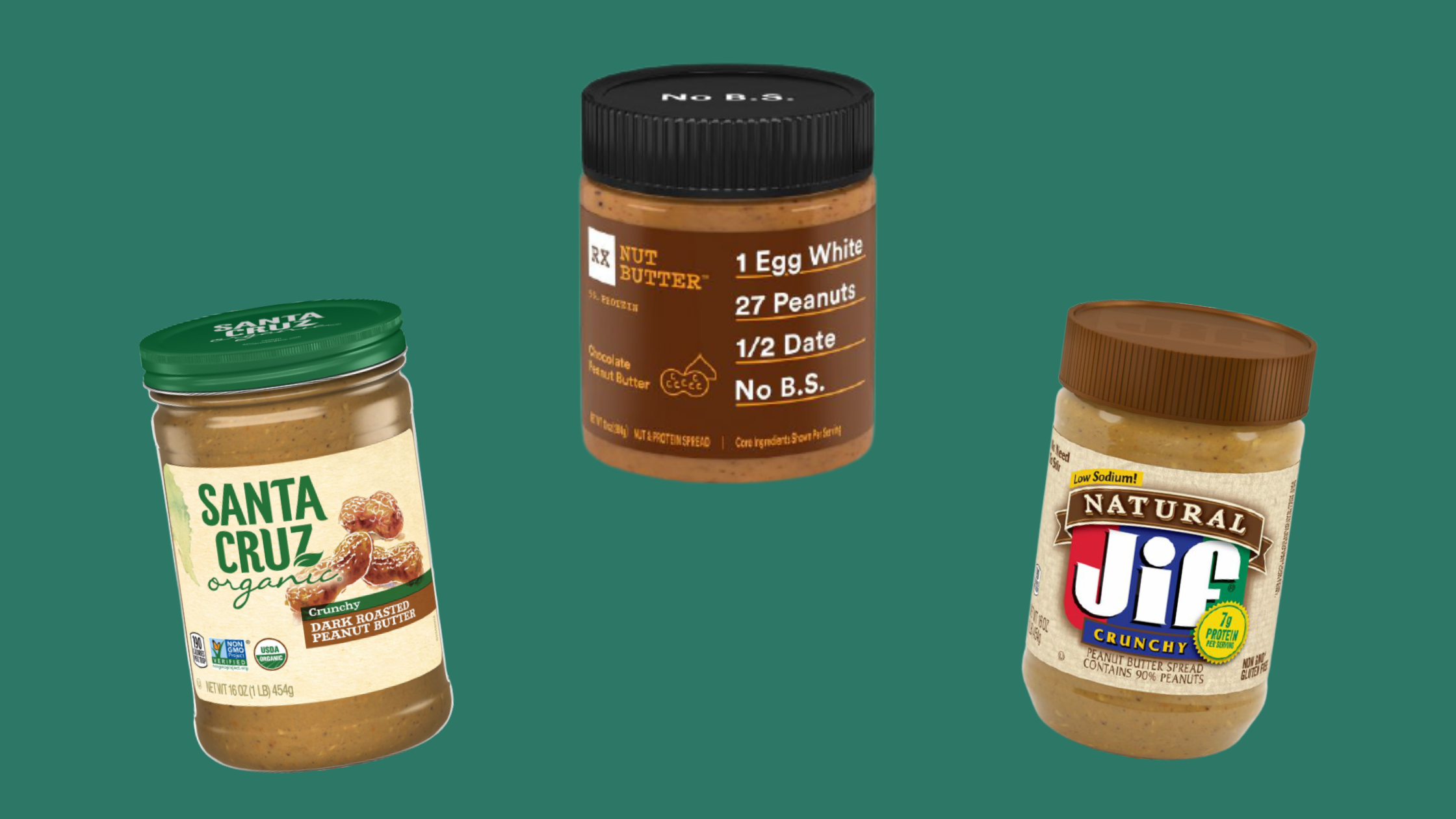
Peanut butter is nutty, creamy (or crunchy depending on your preference), high in protein, and a favorite in many households, but for those that are gluten-free, there can be a couple of extra hurdles to jump before you consider whether to choose creamy or crunchy.
Navigating the supermarket to determine whether a food is gluten-free to avoid an allergic reaction or irritating your digestive system can be a time-consuming and stressful experience, but what your peanut butter search ultimately comes down to is one question:
Is peanut butter gluten-free?
In their natural form, peanuts and peanut butter are gluten-free. In general, gluten-containing peanut butter is the exception to the rule rather than the rule itself (1).
If a peanut butter contains gluten, it’s likely due to added ingredients common in ultra-processed options or contamination during processing.
In general, most store-bought peanut butter doesn’t contain gluten and should be safe for those with allergies or health conditions like IBS (Irritable Bowel Syndrome). The easiest way to distinguish if one of the many peanut butter tubs stocking the shelves is gluten-free is by looking for the Certified Gluten-Free label.
To qualify as gluten-free, brands must adhere to the Food and Drug Administration’s (FDA) requirements to label their products as such.
The FDA requires a product that labels itself “gluten-free” must contain less than 20 mg of gluten per kilogram to certify it as such. Additionally, the product cannot contain wheat, barley, rye, or other grains that contain gluten (2).
These rules apply to all certified gluten-free labels, as well as any product that states it’s gluten-free anywhere on the packaging (3).
Despite the requirements that a brand must meet if they claim their product is gluten-free, manufacturers aren’t required to state whether their product is gluten-free on the label.
That means peanut butter without a gluten-free claim might still be safe for gluten-free eaters. To ensure the peanut butter you buy is truly gluten-free, there are a few potential gluten-containing ingredients to avoid:
- Yeast extract
- Wheat and wheat-based derivatives like wheat flour
- Barley
- Rye
- Triticale
- Malt and malt-based ingredients
- Brewer’s yeast
Here’s a breakdown on how to choose gluten-free peanut butter, plus 13 of our top selections to pick up next time you’re feeling a bit nutty.
How to choose a gluten-free peanut butter
Now that you know most peanut butter is gluten-free, here are a couple things to look out for when purchasing:
- Added sugar. Whether natural, no stir, or traditional — peanut butter can pack a surprising amount of sugar. The average recommended serving on a standard container of peanut butter is around 2 tablespoons, and most of us eat at least 2x that amount simply putting it on a PB&J. Look at the ingredient label and consume in moderation to not exceed the daily AHA recommended value of 5-9 teaspoons a day (4).
- Palm oil. Palm oil is frequently in peanut butter, and while it can be a healthier alternative to partially hydrogenated oils, there are some ethical and environmental issues associated with its production. Look out for palm oil in ingredient lists and seek out the Roundtable on Sustainable Palm Oil (RSPO) label that certifies sustainable palm oil to support companies that promote sustainable and ethical palm oil production (5, 6, 7, 8).
- Saturated fat. While peanut butter can provide an excellent source of protein, fiber, and other nutrients, peanut butter can also add a lot of saturated fat to your diet. The good news is, most peanut butter contains more healthy fats than saturated fat. Consume in moderation, and limit saturated fat consumption to the Dietary Guidelines of Americans recommendation of less than 10% of the total calories you eat and drink each day (9, 10).
- Sodium content. Peanut butter, in general, contains a lot of sodium. Increased sodium intake can pose detrimental health effects for those at risk for heart conditions and high blood pressure. The Dietary Guidelines recommend consuming less than 2,300 mg of sodium per day (11, 12).
GreenChoice Top Picks
1. Rx Nut Butter Chocolate Peanut Butter
This chocolate peanut butter blend is made with peanuts, egg whites, dates, coconut oil, and chocolate. It’s a good source of protein providing 14% of the daily value. Also, it’s low in sodium and contains 0g of added sugar.
Allergen info: May contain milk, eggs, fish, crustaceans, tree nuts, peanuts, wheat, and soy.
2. Jif Natural Crunchy Peanut Butter
This crunchy peanut butter offers 7g of protein, 3g of fiber – 9% of DV -, and only 65mg of sodium – 3% of DV – per serving.
Allergen info: Contains peanuts.
3. Skippy Natural Creamy Peanut Butter Spread With Honey
This creamy peanut butter combines roasted peanuts with honey. One serving offers 6g of protein, 2g of fiber – 7% of DV -, and 5g of added sugar which equals 10% of the daily value.
Allergen info: All varieties are gluten-free, except for SKIPPY® Peanut Butter Natural Dark Chocolate Spread.
More gluten-free peanut butter options
4. Once Again – Unsweetened Crunchy Peanut Butter
This crunchy peanut butter has only one ingredient: organic peanuts. It provides 8g of protein and 2g of fiber – 7% of DV – per serving. Also, it’s free from added sugars, palm oil, or salt.
Allergen info: Contains peanuts. Certified gluten-free.
5. Organic Creamy Peanut Butter Balanced
This organic peanut butter is a good source of fiber and protein. It provides 3g of fiber – 11% of DV – and 8g of protein per serving. Also, it doesn’t contain any salt or added sugars.
Allergen info: CONTAINS PEANUT
6. Crazy Richard’s Crunchy Peanut Butter
This crunchy peanut butter is made with dry roasted peanuts. It offers 8g of protein and 3g of fiber – 11% of DV – per serving. It’s free from added sugars, salt, or palm oil.
Allergen info: Contains peanuts.
7. Cb’s Nuts Organic One Ingredient Peanut Butter
This peanut butter is made from roasted organic peanuts and it doesn’t contain added sugars, salt, or palm oil. It provides 8g of protein and 2g of fiber per serving.
Allergen info: Contains peanuts.
8. Santa Cruz Organic Crunchy Dark Roasted Peanut Butter
This crunchy peanut butter is made with organic roasted peanuts. One serving offers 8g of protein and 3g of fiber which equals 10% of the daily value. Additionally, it provides 20% of the daily value of vitamin E and 30% of the daily value of niacin per serving.
Allergen info: Contains peanuts.
9. Smucker’s Organic Chunky Peanut Butter
This chunky peanut butter is made with organic roasted peanuts and contains less than 1% of salt. One serving offers 8g of protein and 3g of fiber which equals 10% of the daily value. Also, it’s a good source of vitamin E and niacin.
Allergen info: Contains peanuts.
10. Nuttzo Organic Crunchy Peanut Butter
This peanut butter blend is packed with peanuts, cashews, almonds, flax seeds, sunflower seeds, and hazelnuts. It offers 3g of fiber – 11% of DV – and 7g of protein per serving.
Allergen info: peanuts, tree nuts, and seeds.
11. Spread The Love Organic Peanut Butter Naked
This organic peanut butter is free from palm oil, added sugars, or salt. It provides 7g of protein and 2g of fiber – 8% of DV – per serving.
Allergen info: Contains peanuts. Are Spread the Love products vegan dairy-free and gluten-free? Yes.
12. Maranatha Crunchy Roasted Peanut Butter
This organic-certified crunchy peanut butter is made with dry roasted peanuts, palm oil, cane sugar, and sea salt. It offers 7g of protein – 14% of DV -, 2g of fiber – 8% of DV – and only 70mg of sodium – 3% of DV – per serving.
Allergen info: Contains peanuts.
13. Probar Organic Chocolate Peanut Butter Blend
This organic peanut butter is made with peanuts, date paste, cocoa powder, cocoa butter, and stevia extract. It’s certified gluten-free and it offers 7g of protein and 3g of fiber – 11% of DV – per serving.
Allergen info: Contains Peanuts.
Key takeaways for buying gluten-free peanut butter
A gluten-free diet can be hard to navigate when so many food products contain gluten, but since peanut butter is naturally gluten-free, gluten-free peanut butter is easier to find than you might think.
To ensure the peanut butter you eat is safe for consumption, look out for Certified Gluten-Free labels that make it simple to distinguish products that contain gluten. If there isn’t a gluten-free label, the peanut butter may still be gluten-free, but read the ingredient label before eating to avoid any allergic reactions or potential discomfort.
When shopping for prospective peanut butter, be wary of peanut butter that contains excess sodium and sugars, as well as saturated fat, and consume in moderation to prevent exceeding the daily recommended limits.
In addition, be sure to look out for ingredients like palm oil, commonly found in peanut butter and known for their negative social and environmental impacts. Look out for the RSPO label to get insight into each brand’s palm oil production process when choosing or reach for alternative peanut butter that matches your values.
Now that you know most peanut butter is gluten-free, get out there and start using our 13 best gluten-free peanut butter recommendations and tips to make buying gluten-free peanut butter a breeze.
***
GreenChoice, PBC has evaluated and rated more than 340,000 food & beverage products across hundreds of attributes related to diet, health, and sustainability. Easily find the best products for you, the planet, & your budget. Sign up to access the GreenChoice marketplace, the first carbon-neutral online grocery marketplace for healthy, climate-friendly shopping.


